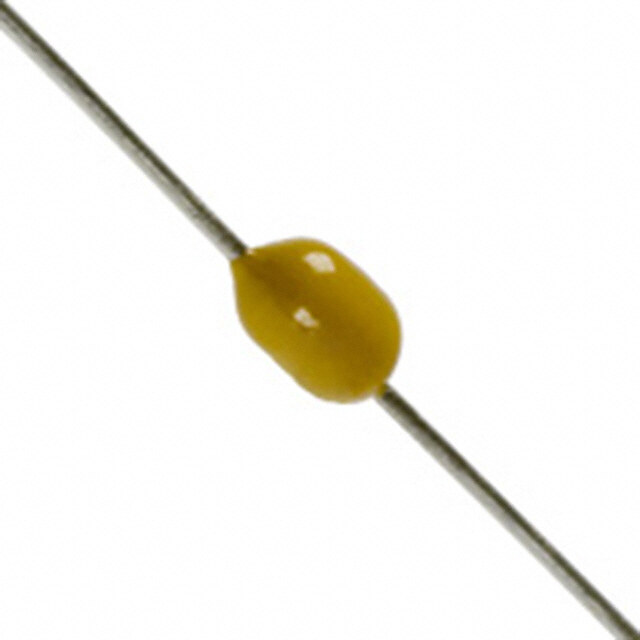ICGOO在线商城 > XC9519A12AZR-G
- 型号: XC9519A12AZR-G
- 制造商: TOREX SEMICONDUCTOR
- 库位|库存: xxxx|xxxx
- 要求:
| 数量阶梯 | 香港交货 | 国内含税 |
| +xxxx | $xxxx | ¥xxxx |
查看当月历史价格
查看今年历史价格
XC9519A12AZR-G产品简介:
ICGOO电子元器件商城为您提供XC9519A12AZR-G由TOREX SEMICONDUCTOR设计生产,在icgoo商城现货销售,并且可以通过原厂、代理商等渠道进行代购。 提供XC9519A12AZR-G价格参考¥10.13-¥11.64以及TOREX SEMICONDUCTORXC9519A12AZR-G封装/规格参数等产品信息。 你可以下载XC9519A12AZR-G参考资料、Datasheet数据手册功能说明书, 资料中有XC9519A12AZR-G详细功能的应用电路图电压和使用方法及教程。
| 参数 | 数值 |
| 产品目录 | 集成电路 (IC) |
| 描述 | IC REG BOOST INV ADJ 2A DL 24QFN |
| 产品分类 | |
| 品牌 | Torex Semiconductor Ltd |
| 数据手册 | |
| 产品图片 |
|
| 产品型号 | XC9519A12AZR-G |
| PWM类型 | - |
| rohs | 无铅 / 符合限制有害物质指令(RoHS)规范要求 |
| 产品系列 | - |
| 供应商器件封装 | 24-QFN(4x4) |
| 其它名称 | 893-1168-6 |
| 包装 | Digi-Reel® |
| 同步整流器 | 无 |
| 安装类型 | 表面贴装 |
| 封装/外壳 | 24-WFQFN 裸露焊盘 |
| 工作温度 | -40°C ~ 85°C |
| 标准包装 | 1 |
| 电压-输入 | 2.7 V ~ 5.5 V |
| 电压-输出 | 4 V ~ 18 V,-4 V ~ -15 V |
| 电流-输出 | 2A |
| 类型 | 升压(升压),反相 |
| 输出数 | 2 |
| 输出类型 | 可调式 |
| 频率-开关 | 1.2MHz |

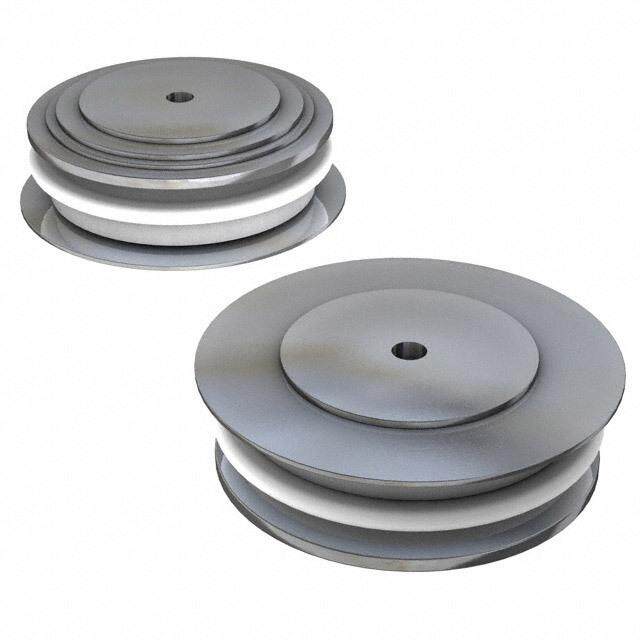
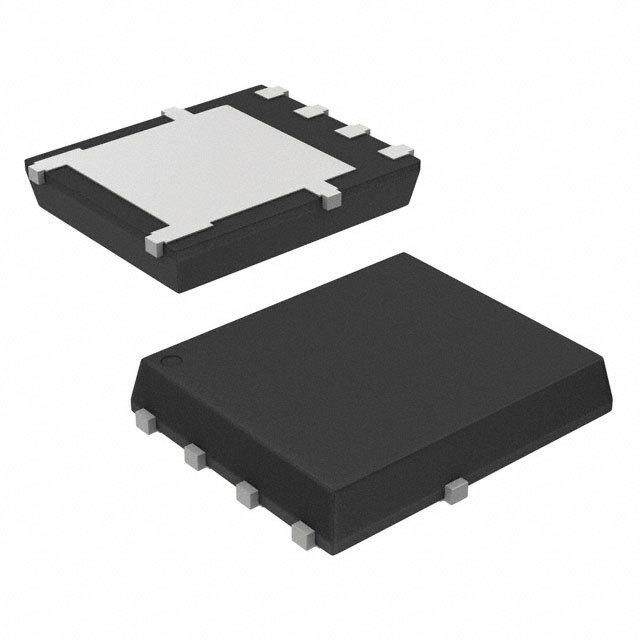
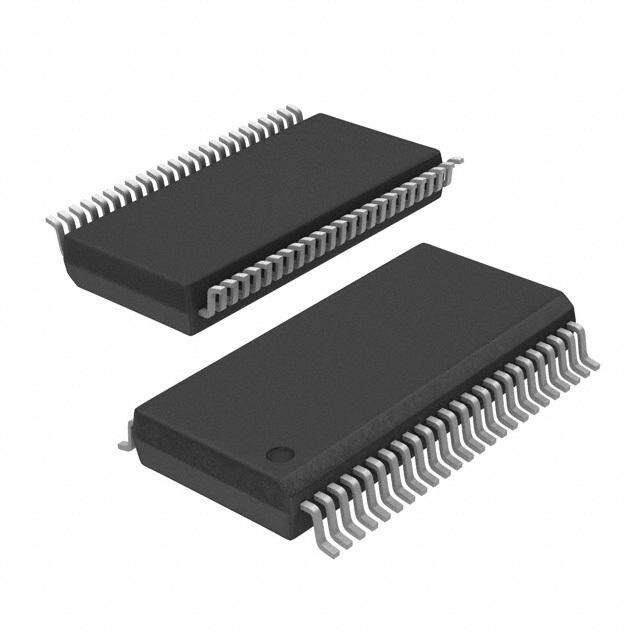
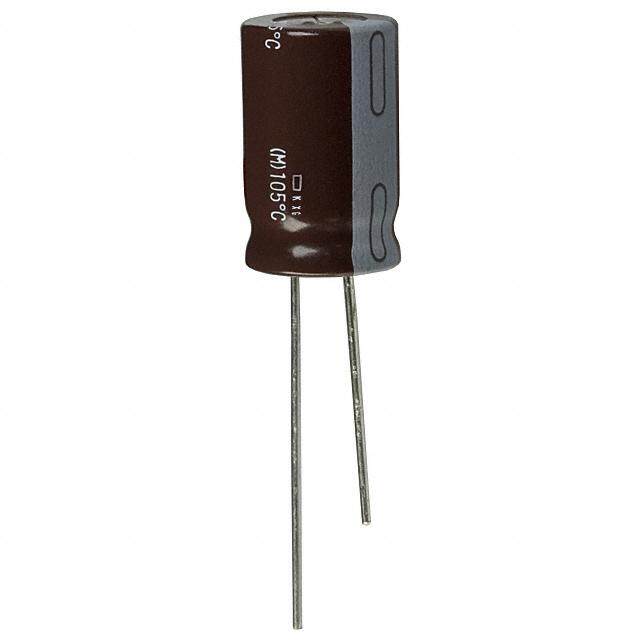
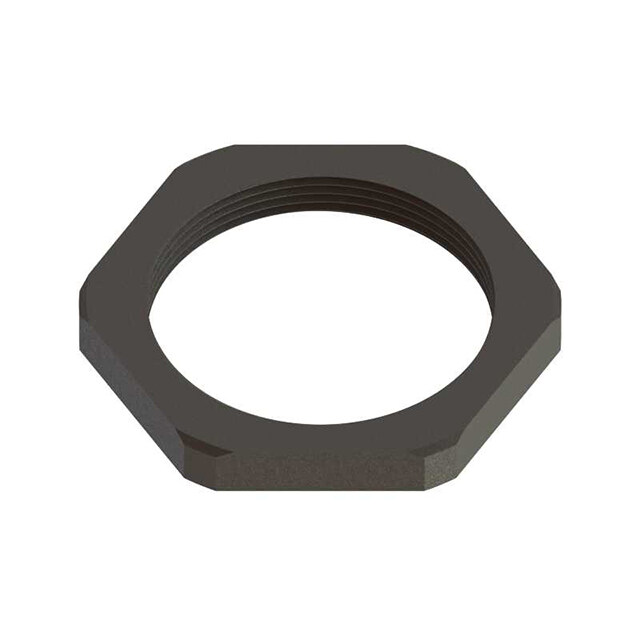
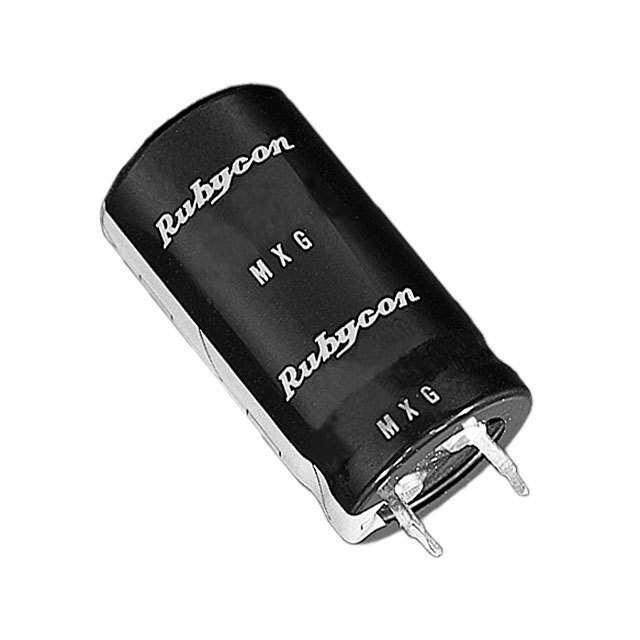
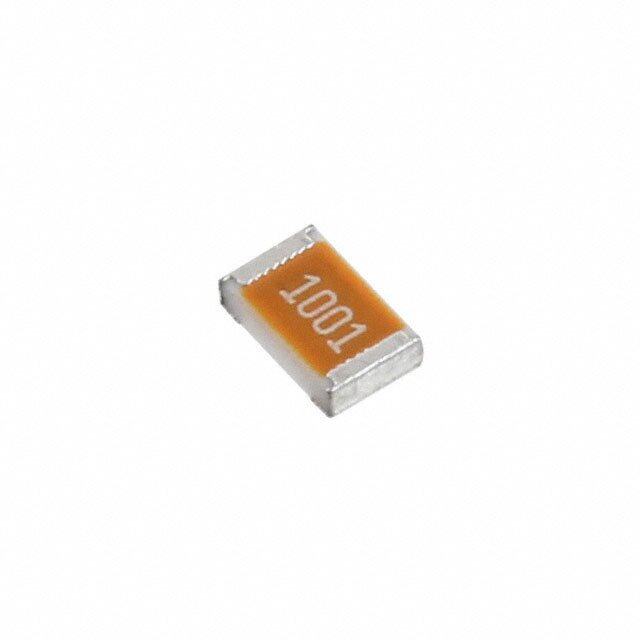

- 商务部:美国ITC正式对集成电路等产品启动337调查
- 曝三星4nm工艺存在良率问题 高通将骁龙8 Gen1或转产台积电
- 太阳诱电将投资9.5亿元在常州建新厂生产MLCC 预计2023年完工
- 英特尔发布欧洲新工厂建设计划 深化IDM 2.0 战略
- 台积电先进制程称霸业界 有大客户加持明年业绩稳了
- 达到5530亿美元!SIA预计今年全球半导体销售额将创下新高
- 英特尔拟将自动驾驶子公司Mobileye上市 估值或超500亿美元
- 三星加码芯片和SET,合并消费电子和移动部门,撤换高东真等 CEO
- 三星电子宣布重大人事变动 还合并消费电子和移动部门
- 海关总署:前11个月进口集成电路产品价值2.52万亿元 增长14.8%

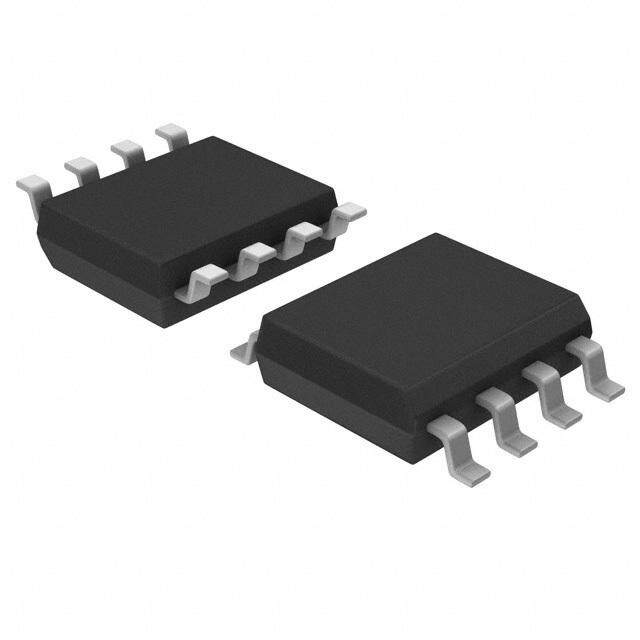
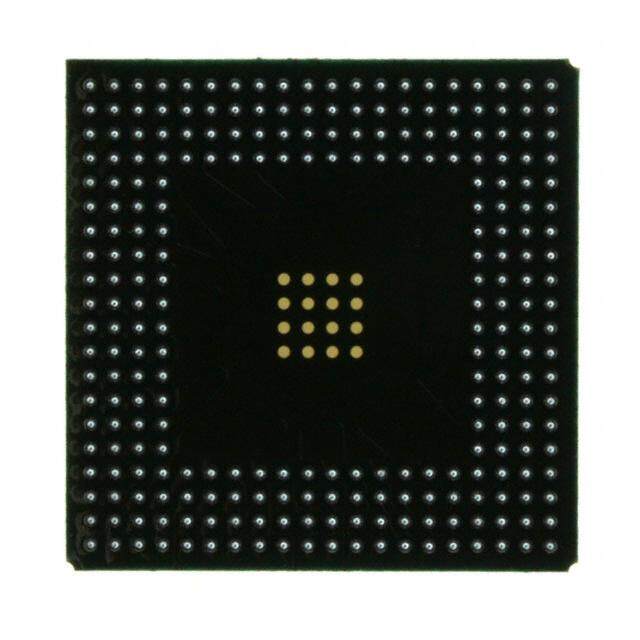

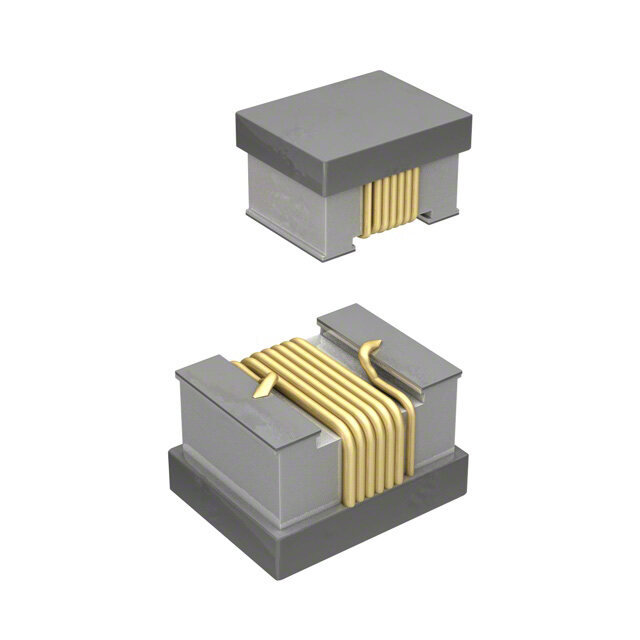
PDF Datasheet 数据手册内容提取
XC9519 Series ETR0710-009 Dual Output Step-Up/Inverting DC/DC Converter ■GENERAL DESCRIPTION The XC9519 series is a 2 channel (step-up and inverting) DC/DC converter IC. One DC/DC converter is a step-up DC/DC and the other is an inverting DC/DC converter. The step-up converter compares a built-in reference voltage 1.0V to the FBP voltage (accuracy ±1.5%) and a positive output voltage can be set freely with the external components up to 18V. The inverting DC/DC converter compares a difference between a reference voltage and the FBN voltage (accuracy ±1.5%) to the GND, then a negative output voltage can be set until -15V with the external components. With a 1.2MHz frequency, the size of the external components can be reduced. As for operation mode, the device can be selected to use PWM control or automatic PWM/PFM switching control by the MODE pin. In the automatic PWM/PFM switching control mode, control switches from PWM to PFM during light loads. The series is highly efficient from light loads through to large output currents. In the PWM control mode, noise is easily reduced since the frequency is fixed. The control mode can be selected for each application. The soft start and current control functions are internally optimized. During stand-by, all circuits in the IC are shutdown to reduce current consumption to as low as 1.0μA or less. The device includes a gate control pin for the P-channel MOSFET which is used for a load disconnection at the stand-by mode. The GAINP and GAINN pins are used for loop compensation in order to optimize load transient response. With the built-in UVLO (Under Voltage Lock Out) function, the internal driver transistor is forced OFF when input voltage becomes 2.2V or lower. ■APPLICATIONS ■FEATURES Input Voltage : 2.7V ~ 5.5V ●AMOLED Output Current : 500mA @V =3.7V, V =5.0V, V =-5.0V IN OUTP OUTN - Smartphones Positive Output Voltage : 4.0V (*1) ~ 18.0V (accuracy ±1.5% @25oC) - Tablet PCs Negative Output Voltage : -15.0V (*2) ~ -4.0V (accuracy ±1.5% @25oC) - Automotive navigation systems Oscillation Frequency : 1.2MHz Soft-Start Circuit Built-In : Step-up DC/DC converter 2.5ms (TYP.) ●CCD image sensors : Inverting DC/DC converter 2.2ms (TYP.) - Surveillance cameras Protection Circuits : Over Current Limit (Integral Latching) ●e-paper Short Protection Latching UVLO -e-Books Thermal Shutdown Over Voltage Protection Function Addition : Control Pin Load disconnect Pin Phase Compensation Pin Ceramic Capacitor Compatible Operating Ambient Temperature : -40℃ ~ +85℃ Package : QFN-24 Environmentally Friendly : EU RoHS Compliant, Pb Free (*1)V ≧V + 0.2V (V :Positive output voltage range) OUTPSET IN OUTPSET (*2)V - V + V ≦21.0V IN OUTNSET FN (V : Forward voltage of SBD ,V : Nagative output voltage range) FN N OUTNSET ■TYPICAL PERFORMANCE ■TYPICAL APPLICATION CIRCUIT CHARACTERISTICS V =5.0V, V =-5.0V, I =I OUTP OUTN OUTP OUTN CLP, CLN=4×4.7μF, LP, LN=3.3μH (VLF5014S-3R3M2R0), SBDP, SBDN: CMS03 LP SBDP VOUTP 10P0-ch MOS: EMH1303, RZP=7.5kΩ, CZP=4.7nF, RZN=130kΩ, CZN=0.47nF CFBP V ="H",V ="H" SWP LXP VOUTP RFBP1 ENP ENN P-ch MOS BSW FBP RSP CLP 80 %) PVIN VREF AVIN RFBN2 CL_VR RFBP2 EFFI( 60 3.6VVIN= 4.4V ENP XC9519 FBN cy: 2.7V VIN CIN_SW CIN_P CIN_A ENN MODE RFBN1 cien 40 AGND VOUTN VOUTN Effi PGND LXN SBDN 20 PWM/PFM (VMODE="H") PWM (V ="L") GAINP GAINN CLN MODE 0 RZP RZN LN 0.1 1 10 100 1000 CZP CZN Output Current:I , I (mA) OUTP OUTN 1/38
XC9519 Series ■BLOCK DIAGRAM Internal O N /O F F C ontroller * Diodes inside the circuit are an ESD protection diode and a parasitic diode. ■PRODUCT CLASSIFICATION ●Ordering Information XC9519①②③④⑤⑥-⑦ DESIGNATOR ITEM SYMBOL DESCRIPTION UVLO Detect Voltage 2.2V ① UVLO Detect Voltage A UVLO Hysteresis width 0.2V ②③ Oscillation Frequency 12 1.2 MHz ④ Maximum Current Limit A 2.0A ⑤⑥-⑦ (*1) Package (Order Unit) ZR-G QFN-24 (1,000/Reel) (*2) (*1) The “-G” suffix denotes Halogen and Antimony free as well as being fully EU RoHS compliant. (*2) The XC9519 reels are shipped in a moisture-proof packing. 2/38
XC9519 Series ■PIN CONFIGURATION *1 *1: The back metal pad, AGND pin and two PGND pins (No. 21 and 22) should be connected outside. ■ PIN ASSIGNMENT PIN NUMBER PIN NAME FUNCTION QFN-24 1, 2 PVIN Power Supply Input 1 3 NC No Connection 4, 5 LXN Switching of Inverting DC/DC Converter 6 VOUTN Detect Monitoring of Inverting DC/DC Output Voltage 7 MODE Selection Pin for Control Mode 8 VREF Reference Output Voltage 9 AVIN Power Supply Input 2 10 FBN Feedback Pin for Inverting DC/DC Converter 11 GAINN Loop Compensation Pin for Inverting DC/DC Converter 12 AGND Analog Ground 13 GAINP Loop Compensation Pin for Step-Up DC/DC Converter 14 FBP Feedback Pin for Step-Up DC/DC Converter 15 ENP Chip Enable Pin for Step-Up DC/DC Converter 16 BSW P-channel MOS FET Gate Control Pin 17 VOUTP Output Voltage Sense for Step-Up DC/DC Converter 18, 19 LXP Switching Output of Step-Up DC/DC Converter 20 NC No Connection 21, 22 PGND Power Ground 23 ENN Chip Enable Pin for Inverting DC/DC Converter 24 SWP Detect Monitoring Voltage Pin for P-channel MOS FET Drain 3/38
XC9519 Series ■FUNCTION 1. ENP Pin Function ENP PIN STATUS H Step-up DC/DC Converter Active L Step-up DC/DC Converter Stand-by * Please do not leave the ENP pin open. V IN ENP 0V V IN BSW 0V 2.5ms V OUTP V IN 0V 2. ENN Pin Function ENN PIN STATUS H Inverting DC/DC Converter Active L Inverting DC/DC Converter Stand-by * Please do not leave the ENP pin open. V IN ENN 0V 2.2ms 0V V OUTN 3. MODE Pin Function MODE PIN STATUS H Auto PWM/PFM L PWM Control * Please do not leave the MODE pin open. 4/38
XC9519 Series ■ABSOLUTE MAXIMUM RATINGS Ta=25℃ PARAMETER SYMBOL RATINGS UNITS PVIN Pin Voltage V -0.3 ~ +6.0 V PVIN AVIN Pin Voltage V -0.3 ~ +6.0 V AVIN ENP Pin Voltage V -0.3 ~ +6.0 V ENP ENN Pin Voltage V -0.3 ~ +6.0 V ENN MODE Pin Voltage V -0.3 ~ +6.0 V MODE LXP Pin Voltage V -0.3 ~ +22.0 V LXP LXN Pin Voltage V V -22.0 ~ V +0.3 V LXN PVIN PVIN FBP Pin Voltage V -0.3 ~ +6.0 V FBP FBN Pin Voltage V -0.3 ~ +6.0 V FBN VOUTP Pin Voltage V -0.3 ~ +22.0 V OUTP VOUTN Pin Voltage V V -22.0 ~ V +0.3 V OUTN AVIN AVIN BSW Pin Voltage V -0.3 ~ +6.0 V BSW SWP Pin Voltage V -0.3 ~ +6.0 V SWP VREF Pin Voltage V -0.3 ~ +6.0 V REF GAINP Pin Voltage V -0.3 ~ +6.0 V GAINP GAINN Pin Voltage V -0.3 ~ +6.0 V GAINN LXP Pin Current I 4000 mA LXP LXN Pin Current I 4000 mA LXN Power Dissipation Pd 1500 (PCB mounted) * mW Operating Ambient Temperature Topr -40 ~ +85 oC Storage Temperature Tstg -55 ~ +125 oC * All voltages are described based on the AGND and PGND pin. * The value is an example of data which is taken with the PCB mounted. Please refer to our web site for details. 5/38
XC9519 Series ■ELECTRICAL CHARACTERISTICS ●XC9519 Series, Common Characteristics f =1.2MHz Ta=25℃ OSC PARAMETER SYMBOL CONDITIONS (*1) MIN. TYP. MAX. UNITS CIRCUIT Input Voltage VIN 2.7 - 5.5 V - V =1.5V, V = V = 0V, V = 0.1V ENP ENN FBP FBN UVLO Detect Voltage VUVLO The voltage which LXP stops oscillation while 2.0 2.2 2.4 V ⑨ V is decreasing from 2.4V. IN V =1.5V, V = V = 0V, V = 0.1V ENP ENN FBP FBN UVLO Release Voltage VUVLOR The voltage which LXP starts oscillation while 2.2 2.4 2.6 V ⑨ V is increasing from V . IN UVLO UVLO Hysteresis Range VUVLOH VUVLOH = VUVLOR - VUVLO - 0.2 - V - V =V = V = V = 5.5V Supply Current 1 IDD1 VIN =5E.N5PV , VENN = -0M.1OVDE, V = V = 5.5V 50 170 450 μA ① FBP FBN OUTP SWP V = V = V = 5.5V, V = 0V Supply Current 2 IDD2 VIN = -E0N.N1 V MODE ENP 30 90 250 μA ① FBN V =V = V = 5.5V, V =0V Supply Current 3 IDD3 VIN = E5N.P5 V, VMODE= V = E5N.N5 V 30 110 250 μA ① FBP OUTP SWP Stand-by Current ISTB VIN =5.5V, VENP =VENN = VMODE = 0V - 0 1.0 μA ① V = 5.5V, V = V = 0V, V = 0V IN ENN MODE FBP ENP ”H” Voltage VENPH The voltage which LXP starts oscillation while 1.4 - 5.5 V ⑦ V is increasing from 0.3V. ENP V = 5.5V, V = V = 0V, V = 0V IN ENN MODE FBP ENP ”L” Voltage VENPL The voltage which LXP stops oscillation while AGND - 0.3 V ⑦ V Is decreasing from 1.4V. ENP ENP ”H” Current IENPH VIN = VENP = 5.5V -0.1 - 0.1 μA ⑦ ENP ”L” Current IENPL VIN = VENP = 0V -0.1 - 0.1 μA ⑦ V = 5.5V, V = V = 0V, V = 5.5V IN ENP MODE FBN ENN ”H” Voltage VENNH The voltage which LXN starts oscillation while 1.4 - 5.5 V ⑦ V is increasing from 0.3V. ENN V = 5.5V, V = V = 0V, V = 5.5V IN ENP MODE FBN ENN ”L” Voltage VENNL The voltage which LXN stops oscillation while AGND - 0.3 V ⑦ V is decreasing from 1.4V. ENN ENN ”H” Current IENNH VIN = VENN = 5.5V -0.1 - 0.1 μA ⑦ ENN ”L” Current IENNL VIN = VENN = 0V -0.1 - 0.1 μA ⑦ V = V = 5.5V, V = 0V, IN ENP ENN MODE ”H” Voltage VMODEH The voltage which supply current decreases 1.4 - 5.5 V ⑦ while V is increasing from 0.3V. MODE V = V = 5.5V, V = 0V, IN ENP ENN MODE ”L” Voltage VMODEL The voltage which supply current increases while AGND - 0.3 V ⑦ V is decreasing from 1.4V. MODE MODE ”H” Current IMODEH VIN = VMODE = 5.5V -0.1 - 0.1 μA ⑦ MODE ”L” Current IMODEL VIN = VMODE = 0V -0.1 - 0.1 μA ⑦ FBP ”H” Current I V =5.5V, V =V =V =0V, V =5.5V -0.1 - 0.1 μA ⑦ FBPH IN ENP ENN MODE FBP FBP ”L” Current I V =5.5V, V =V =V =0V, V =0V -0.1 - 0.1 μA ⑦ FBPL IN ENP ENN MODE FBP FBN ”H” Current I V =5.5V, V =V =V =0V, V =5.5V -0.1 - 0.1 μA ⑦ FBNH IN ENP ENN MODE FBN FBN ”L” Current I V =5.5V, V =V =V =0V, V =0V -0.1 - 0.1 μA ⑦ FBNL IN ENP ENN MODE FBN SWP ”H” Current I V =5.5V, V =V =V =0V, V =5.5V -0.1 - 0.1 μA ⑦ SWPH IN ENP ENN MODE SWP SWP ”L” Current I V =5.5V, V =V =V =0V, V =0V -0.1 - 0.1 μA ⑦ SWPL IN ENP ENN MODE SWP V =V =V = 5.5V, V =0V IN ENP ENN MODE V =0.9V, V = 0.1V Integral Latch Time tLAT TiFmBPe to stop oFBpNe ration from the start of maximum 1.0 2.0 3.0 ms ⑤ current limit status. Thermal Shutdown T - 150 - oC - TSD Temperature Thermal Shutdown T - 130 - oC - TSDR Release Temperature Thermal Shutdown T T =T - T - 20 - oC - HYS HYS TSDR TSD Hysteresis Range (*1) If the applied voltage and its pin name are not stated, those pins are left open for measurement. 6/38
XC9519 Series ■ELECTRICAL CHARACTERISTICS (Continued) ●XC9519 Series, Step-up DC/DC Converter Ta=25℃ PARAMETER SYMBOL CONDITIONS (*1) MIN. TYP. MAX. UNITS CIRCUIT Output Voltage Range VOUTPSET 4.0 (*2) - 18.0 V - V = V = 3.6V, V = V = 0V IN ENP ENN MODE V = V = 3.6V FBP Voltage VFBP TOhUeT Pv oltaSgWeP which L starts oscillation while 0.985 1.000 1.015 V ③ XP V is decreasing. FBP V = V = 3.6V, V = V = 0V Oscillation Frequency fOSCP VIN =E NVP = 3.6VE, NVN =M0OVDE 1020 1200 1380 kHz ③ OUTP SWP FBP PFM Switching Current IPFMP VIN =VENP = VMODE = 3.6V, VENN =0V 180 350 550 mA ⑧ V = V = 3.6V, V = V = 0V Maximum Duty Cycle DMAXP VIN =E NVP = 3.6VE, NVN =M0OVDE 84 90 97 % ③ OUTP SWP FBP LXP SW “H” ON R V = V = 3.6V, V = V = 0V, I = 100mA - 0.12 0.28 Ω ④ LXPH IN ENP ENN MODE LXP Resistance LXP SW “H” Leak I V =5.5V, V =0V, V =5.5V - 0.01 1.0 μA ⑥ LEAKH IN ENP LXP Current V =V = 5.5V, V = V =0V Maximum Current Limit (*3) ILIMP VIN = E0N.P9 V, V =E NVN =M O5D.E5V 2000 - 4000 mA ⑤ FBP OUTP SWP FBP Voltage Temperature (V(cid:85)・VF(cid:85)BPT o/ p r) -40 oC≦Topr≦85 oC - ±100 - ppm / oC - FBP Characteristics V = 3.6V, V = V = 0V IN ENN MODE V = V = 3.6V, V = 0.95V Soft-Start Time tSSP TiOmUTeP to stSaWrPt L oscillaFtBiPon from the rise of V . 0.8 2.5 5.2 ms ③ XP ENP (0V→3.6V) V =V = 5.5V, V = V =0V IN ENP ENN MODE Short Protection V = V = 5.5V V OUTP SWP 0.3 0.5 0.7 V ⑤ Threshold Voltage SHORTP The voltage which the integral latch time becomes 200μs or less while V is decreasing. FBP V = V = 3.6V, V = V = 0V IN ENP ENN MODE Over Voltage V = V = 3.6V, V = 3.6V V V V Protection Limit VOVPP TOhUeT Pv oltaSgWeP which L GsAtIoNPp s oscillation while +0F.B0P3 +0F.B0P7 +0F.B1P0 V ③ XP V is increasing. FBP V = V = 3.6V, V = V = 0V BSW Pin Current IBSW VIN =E NVP = 3.6VE, NVN =MO3D.6EV 0.2 1.2 3.0 mA ⑦ OUTP SWP BSW V = 6.0V, V =V = V = 0V CL Discharge Resistance RDCHGP VIN = 4.0V ENP ENN MODE 50 200 500 Ω ② OUTP NOTE: (*1) If the applied voltage and its pin name are not stated, those pins are left open for measurement. (*2) Input voltage or positive output voltage range should be V ≧V + 0.2V. OUTPSET IN (*3) Maximum current limit denotes the level of detection at peak of coil current. 7/38
XC9519 Series ■ELECTRICAL CHARACTERISTICS (Continued) ●XC9519 Series, Inverting DC/DC Converter Ta=25℃ PARAMETER SYMBOL CONDITIONS (*1) MIN. TYP. MAX. UNITS CIRCUIT Output Voltage Range VOUTNSET -15.0(*2) - -4.0 V - V = V = 3.6V, V = V = 0V IN ENN ENP MODE FBN Voltage VFBN The voltage which LXN starts oscillation while -26 0 26 mV ③ V is increasing. FBN Reference Voltage VREF VIN = VENN = 3.6V, VENP = VMODE = 0V, VFBN= 0.1V 0.970 1.000 1.030 V ① Output Voltage Accuracy VOUTNA VOUTNA =VREF -VFBN 0.985 1.000 1.015 V - Oscillation Frequency fOSCN VIN = VENN = 3.6V, VENP = VMODE = 0V, VFBN= 0.1V 1020 1200 1380 kHz ③ PFM Switching Current IPFMN VIN = VENN = VMODE = 3.6V, VENP = 0V 220 350 550 mA ⑧ Maximum Duty Cycle DMAXN VIN = VENN = 3.6V, VENP = VMODE = 0V, VFBN= 0.1V 84 90 97 % ③ LXN SW “L” ON R V = V = 3.6V, V = V = 0V, I = 100mA - 0.22 0.48 Ω ④ LXNL IN ENN ENP MODE LXN Resistance LXN SW “L” Leak I V = V = 3.6V, V = V = 0V, V = 0.1V - 0.01 1.0 μA ⑥ LEAKL IN ENN ENP MODE FBN Current V = V = 5.5V, V = V = 0V Maximum Current Limit (*3) ILIMN VIN = 0E.N1NV ENP MODE 2000 - 4000 mA ⑤ FBN Reference Voltage Temperature (V(cid:85)・VR(cid:85)EFT o/ p r) -40 oC≦Topr≦85 oC - ±100 - ppm / oC - REF Characteristics V = 3.6V, V = V = 0V, V = 0.05V IN ENP MODE FBN Soft-Start Time tSSN Time to start LXN oscillation from the rise of VENP. 0.8 2.2 4.0 ms ③ (0V→3.6V) V = V = 5.5V, V = V = 0V Short Protection IN ENN ENP MODE V The voltage which the integral latch time 0.3 0.5 0.7 V ⑤ SHORTN Threshold Voltage becomes 200μs or less while V is increasing. FBN V = V = 3.6V, V = V = 0V, V = 3.6V Over Voltage IN ENN ENP MODE GAINN V V V Protection Limit VOVPN The voltage which LXN stops oscillation while -0F.1BN0 -0F.0BN7 -0F.0BN3 V ③ V is decreasing. FBN V = 6.0V, V =V = V = 0V CL Discharge Resistance RDCHGN VIN = -4.0VE NP ENN MODE 50 200 500 Ω ② OUTN NOTE: (*1) If the applied voltage and its pin name are not stated, those pins are left open for measurement. (*2) Input voltage or positive output voltage range should be V - V + V ≦21.0V (V : Forward voltage of external schottky barrier IN OUTNSET FN FN diode) . (*3) Maximum current limit denotes the level of detection at peak of coil current. 8/38
XC9519 Series ■OPERATIONAL EXPLANATION The XC9519 series consists of a reference voltage source, ramp wave circuit, error amplifier, PWM comparator, phase compensation circuit, driver transistor, current limiter circuit, short protection circuit, UVLO circuit, thermal shutdown circuit, over voltage protection, load disconnect control and others. (See the block diagram below.) By using the error amplifier, the FBP (FBN) pin voltage is compared with the internal reference voltage. The error amplifier output is sent to the PWM comparator in order to determine the duty cycle of PWM switching. The signal from the error amplifier is compared with the ramp wave from the ramp wave circuit, and the resulting output is delivered to the buffer driver circuit to provide on-time of the duty cycle at the LXP (LXN) pin. This process is continuously performed to ensure stable output voltage. The current feedback circuit monitors the driver transistor current for each switching operation, and modulates the error amplifier output signal to provide multiple feedback signals. This enables a stable feedback loop even when using a low ESR capacitor such as ceramic, which results in ensuring stable output voltage. In terna l O N/ OF F Co ntroller * Diodes inside the circuit are an ESD protection diode and a parasitic diode. 9/38
XC9519 Series ■OPERATIONAL EXPLANATION (Continued) <Reference Voltage Source> The reference voltage source provides the reference voltage to ensure stable output voltage of the DC/DC converter. <Step-up DC/DC Converter Error Amplifier> The step-up DC/DC converter error amplifier is an amplifier for output voltage monitoring. The FBP pin voltage is compared to the reference voltage. When a voltage lower than the reference voltage is feedback to the FBP pin voltage, the output voltage of the error amplifier goes high. External compensation of the error amplifier frequency characteristic is also possible. <Inverting DC/DC Converter Error Amplifier> The inverting DC/DC converter error amplifier is an amplifier for output voltage monitoring. The FBN pin voltage is compared to GND. When a voltage higher than GND is feedback to the FBN pin voltage, the output voltage of the error amplifier goes high. External compensation of the error amplifier frequency characteristic is also possible. <Ramp Wave Circuit> The ramp wave circuit determines switching frequency. The frequency is fixed 1.2MHz internally. Clock pulses generated in this circuit are used to produce ramp waveforms needed for PWM operation, and to synchronize all the internal circuits. <UVLO Circuit> When the AVIN pin voltage becomes 2.2V or lower, the driver transistor is forced OFF to prevent false pulse output caused by unstable operation of the internal circuitry. When the AVIN pin voltage becomes 2.4V or higher, switching operation takes place. By releasing the UVLO function, the IC performs the soft start function to initiate output startup operation. The soft start function operates even when the AVIN pin voltage falls momentarily below the UVLO detect voltage. The UVLO circuit does not cause a complete shutdown of the IC, but causes pulse output to be suspended; therefore, the internal circuitry remains in operation. <Thermal Shutdown> For protection against heat damage of the ICs, thermal shutdown function monitors chip temperature. The thermal shutdown circuit starts operating and the driver transistor will be turned off when the chip’s temperature reaches 150 oC. When the temperature drops to 130 oC or less after shutting of the current flow, the IC performs the soft start function to initiate output startup operation. <PFM Switch Current> In PFM control operation, until coil current reaches to a specified level (I , I ), the IC keeps the driver transistor on. In this case, time PFMP PFMN (t ) that the driver transistor is kept on can be given by the following formula. ON tON = L ×IPFMP (IPFMN) / VIN < PFM Duty Limit > In PFM control operation, the maximum duty cycle (DTY ) is set to 50% (TYP.). Therefore, under the condition that the duty increases LIMIT_PFM (e.g. the condition that the step-up ratio is large), it’s possible for the driver transistor to be turned off even when the coil current doesn’t reach to IPFMP (I ). PFMN 10/38
XC9519 Series ■OPERATIONAL EXPLANATION (Continued) < C Auto-Discharge Function > L This function enables high-speed discharge of the charge on the output capacitor (C) when an L level signal is input to the ENP (ENN) pin by L means of the internal switch between the VOUTP pin and AGND pin (between the VOUTN pin and AVIN pin). This function makes it possible to prevent malfunctioning of applications caused by charge remaining on C. L The discharge time is determined by the C discharge resistance (R ) and C. Ifτ(τ= C × R ) is the time constant of C and R , the L DCHC L L DCHG L DCHG equation for the output voltage discharge time can be obtained from the following CR discharge equation. t=τln(V / V) OUTSET V: Output voltage during discharge V : Output voltage OUTSET t: Discharge time τ: C×R L DCHG [Example] When the set voltage (V )=5.0V, C =18.8μF, and the C discharge resistance (R )=200Ω (TYP.) of the DC/DC Converter, the OUTPSET LP L DCHGP discharge time t from the start of C high-speed discharge until the output voltage falls to 1.0V can be calculated as follows: L t=τln ( V / V )= C ×R ln ( V / V ) = 18.8μF×200Ω×ln ( 5.0V / 1.0V ) = 6.05×10-3 s = 6.05 ms (*1) OUTPSET LP DCHGP OUTPSET (*1) Calculated with I = 0mA OUT <Internal OSC Timing Chart> The step-up DC/DC Converter and the Inverting DC/DC Converter are switching synchronously based on one internal clock. The phase of the step-up driver on timing for the DC/DC Converter is shifted to completely opposite position (180 degrees different) upon the phase of driver on timing for the Inverting DC/DC Converter. 1.2MHz Internal OSC Inductor Peak Current Boost_I LX 0A Inductor Peak Current Inverting_I LX 0A <Overvoltage Protection> Overvoltage protection monitors the output voltage V (V ) using the FBP (FBN) pin voltage, and prevents the output voltage V OUTP OUTN OUTP (V ) from rising too far above the set voltage. In particular, fluctuations in the load cause the output voltage to rise, and when the FBP (FBN) OUTN pin voltage reaches the overvoltage protection detection voltage, the driver transistor of the step-up DC/DC converter (inverting DC/DC converter) is turned off to hold down the rise of output voltage. When the output voltage falls after overvoltage protection detection, normal DC/DC converter operation resumes. The output voltage V that is detected by overvoltage protection is obtained from the following equation: OUT_OVP V (V )=V (V ) × V (V ) OUT_OVP P OUT_OVPN OUTPSET OUTNSET OVP P OVPN V (V ): Output voltage, V (V ): Detect Overvoltage Protection Voltage OUTPSET OUTNSET OVPP OVPN [Example] In a step-up DC/DC converter with the indicated conditions, the output voltage V that is detected by overvoltage protection can be OUT_OVPP calculated as shown below. Condition: Output Voltage (V )=5.0V, V =V +0.07V(TYP.) , V =1.0V(TYP.) OUTPSET OVPP FBP FBP V = V × V = 5.0V× (1.0 + 0.07(TYP.)) =5.0V× 1.07 = 5.35V OUT_OVPP OUTPSET OVP <Load disconnect Control Circuit> The Load disconnect control circuit makes it possible to break continuity between V and V by turning off the external P-ch MOS FET when the IN OUTP step-up DC/DC converter is in the standby state. 11/38
XC9519 Series ■OPERATIONAL EXPLANATION (Continued) <Current Limit> The current limiter circuit of the XC9519 series monitors the current flowing through the driver transistor, and features a combination of the current limit mode and the operation suspension mode. ① When the driver current is greater than a specific level, the current limit function operates to turn off the pulses from the LXP (LXN) pin at any given timing. ② When the driver transistor is turned off, the limiter circuit is then released from the current limit detection state. ③ At the next pulse, the driver transistor is turned on. However, the transistor is immediately turned off in the case of an over current state. ④ When the over current state is eliminated, the IC resumes its normal operation. The IC waits for the over current state to end by repeating the steps ① through ③. If an over current state continues for the integral latch time and the above three steps are repeatedly performed, the IC performs the function of integral latching the OFF state of the driver transistor, and goes into operation suspension mode. Once the IC is in suspension mode, operations can be resumed by either turning the IC off via the ENP (ENN) pin, or by restoring power. Care must be taken when laying out the PC Board, in order to prevent misoperation of the current limit mode. Depending on the state of the PC Board, latch time may become longer and latch operation may not work. In order to avoid the effect of noise, the board should be laid out so that input capacitors are placed as close to the IC as possible. (a) Step-up DC/DC Converter Limit < 2.0ms(TYP.) Limit > 2.0ms(TYP.) Current Limit Level I OUTP 0mA V OUTP AGND,PGND V LXP ENP Restart AGND,PGND (b) Inverting DC/DC Converter Limit < 2.0ms(TYP.) Limit > 2.0ms(TYP.) Current Limit Level I OUTN 0mA AGND,PGND V OUTN V LXN ENN Restart AGND,PGND <Short-Circuit Protection> The short-circuit protection circuit monitors the output voltage from the V (V ). In case where output is accidentally shorted to the GND OUTP OUTN and when the FBP voltage decreases less than short protection threshold voltage or FBN pin voltage becomes larger than short protection threshold voltage and a current more than the I flows to the driver transistor, the short-circuit protection quickly operates to turn off and to latch LIM the driver transistor. Once the IC is in suspension mode, operations can be resumed by either turning the IC off via the ENP (ENN) pin, or by restoring power. 12/38
XC9519 Series ■EXTERNAL COMPONENTS <Step-up DC/DC Converter Output Voltage Setting> The output voltage V of a step-up DC/DC converter can be set by connecting external dividing resistors R and R . OUTP FBP1 FBP2 The output voltage V is determined by the values of R and R as given in the equation below. OUTP FBP1 FBP2 Adjust R and R so that (R + R ) < 500kΩ. FBP1 FBP2 FBP1 FBP2 V = V × (R + R ) / R OUTP FBP FBP1 FBP2 FBP2 Set the output voltage so that V ≧V + 0.2V is satisfied. OUTP IN Adjust the value of the phase compensation speed-up capacitor C so that f =1 / (2 × π × R ) is about 40kHz, and insert several kΩ in FBP zfp FBP1 series as R . If a high output voltage is set, inserting a phase compensation speed-up capacitor may cause unstable operation. SP Examples of setting C and R are shown in the next section, “Step-up DC/DC Converter Error Amplifier External Compensation”. FBP SP 【Typical Examples】 V R R OUTP FBP1 FBP2 4.0V 300kΩ 100kΩ 5.0V 300kΩ 75kΩ 9.0V 240kΩ 30kΩ 12.0V 330kΩ 30kΩ 15.0V 336kΩ 24kΩ 18.0V 408kΩ 24kΩ <Inverting DC/DC Converter Output Voltage Setting> The output voltage V of an inverting DC/DC converter can be set by connecting external dividing resistors R and R . OUTN FBN1 FBN2 The output voltage V is determined by the values of R and R as given in the equation below. OUTN FBN1 FBN2 Adjust R and R so that (R + R ) < 500kΩ. FBN1 FBN2 FBN1 FBN2 V = - (V - V ) × R / R OUTN REF FBN FBN1 FBN2 Set the output voltage so that V - V + V ≦21.0V IN OUTN FN (V : Forward voltage of external diode SBD ) is satisfied. FN N 【Typical Examples】 V R R OUTN FBN1 FBN2 -4.0V 300kΩ 75kΩ -5.0V 300kΩ 60kΩ -9.0V 270kΩ 30kΩ -12.0V 360kΩ 30kΩ -15.0V 360kΩ 24kΩ 13/38
XC9519 Series ■COMPONENT SELECTION METHOD (Continued) <Step-up DC/DC Converter Error Amplifier External Compensation> External compensation of the frequency characteristic of a step-up DC/DC converter error amplifier is possible with R and C . The values of ZP ZP R and C can be adjusted to obtain the optimum load-transient response (step response). For adjustment using the input voltage and output ZP ZP voltage, use the setting values below. V Output Voltage Range L C R C C R IN P LP ZP ZP FBP SP 2×4.7μF 5.1kΩ 4.7nF 47pF(*1) 4.7kΩ 4.6V ≦ V ≦ 5.0V 3.3μH OUTP 4×4.7μF 8.2kΩ 4.7nF 47pF(*1) 4.7kΩ 2×4.7μF 5.1kΩ 4.7nF - - 5.0V < V ≦ 9.0V 3.3μH OUTP 4×4.7μF 7.5kΩ 4.7nF - - Li-ion 2×4.7μF 10kΩ 4.7nF - - 9.0V < V ≦ 12.0V 3.3μH (2.7~4.4V) OUTP 4×4.7μF 18kΩ 2.2nF - - 2×4.7μF 16kΩ 2.2nF - - 12.0V < V ≦ 15.0V 3.3μH OUTP 4×4.7μF 27kΩ 2.2nF - - 2×4.7μF 16kΩ 2.2nF - - 15.0V < V ≦ 18.0V 3.3μH OUTP 4×4.7μF 24kΩ 4.7nF - - V Output Voltage Range L C R C C R IN P LP ZP ZP FBP SP 2×4.7μF 8.2kΩ 4.7nF 47pF(*2) 4.7kΩ 4.0V ≦V ≦ 5.0V 3.3μH OUTP 4×4.7μF 13kΩ 4.7nF 47pF(*2) 4.7kΩ 2×4.7μF 16kΩ 2.2nF - - 5.0V < V ≦ 9.0V 3.3μH OUTP 4×4.7μF 22kΩ 2.2nF - - 2×4.7μF 18kΩ 2.2nF - - 3.3V±10% 9.0V < V ≦12.0V 3.3μH OUTP 4×4.7μF 30kΩ 2.2nF - - 2×4.7μF 24kΩ 2.2nF - - 12.0V < V ≦ 15.0V 3.3μH OUTP 4×4.7μF 36kΩ 2.2nF - - 2×4.7μF 22kΩ 2.2nF - - 15.0V < V ≦ 18.0V 3.3μH OUTP 4×4.7μF 36kΩ 2.2nF - - V V L C R C C R IN OUTP P LP ZP ZP FBP SP 2×4.7μF 4.7kΩ 4.7nF 68pF(*3) 4.7kΩ 5.7V ≦ V ≦ 7.0V 3.3μH OUTP 4×4.7μF 8.2kΩ 4.7nF 68pF(*3) 4.7kΩ 2×4.7μF 5.1kΩ 4.7nF - - 7.0V < V ≦ 9.0V 3.3μH OUTP 4×4.7μF 10kΩ 4.7nF - - 2×4.7μF 8.2kΩ 4.7nF - - 5V±10% 9.0V < V ≦ 12.0V 3.3μH OUTP 4×4.7μF 16kΩ 2.2nF - - 2×4.7μF 13kΩ 2.2nF - - 12.0V < V ≦ 15.0V 3.3μH OUTP 4×4.7μF 24kΩ 2.2nF - - 2×4.7μF 12kΩ 2.2nF - - 15.0V < V ≦ 18.0V 3.3μH OUTP 4×4.7μF 18kΩ 4.7nF - - (*1) Setting value with RFBP1 = 300kΩ (*2) Setting value with RFBP1 = 360kΩ (*3) Setting value with RFBP1 = 240kΩ 14/38
XC9519 Series ■COMPONENT SELECTION METHOD (Continued) <Inverting DC/DC Converter Error Amplifier External Compensation> External compensation of the frequency characteristic of an inverting DC/DC converter error amplifier is possible with R and C . The values ZN ZN of R and C can be adjusted to obtain the optimum load-transient response (step response). For adjustment using the input voltage and output ZN ZN voltage, use the setting values below. V Output Voltage Range L C R C IN N LN ZN ZN 2×4.7μF 51kΩ 1.0nF -4.0V≧V ≧-5.0V 3.3μH OUTN 4×4.7μF 110kΩ 0.47nF 2×4.7μF 68kΩ 0.47nF -5.0V > V ≧-9.0V 3.3μH OUTN Li-ion 4×4.7μF 130kΩ 0.47nF (2.7~4.4V) 2×4.7μF 120kΩ 0.47nF -9.0V > V ≧-12.0V 3.3μH OUTN 4×4.7μF 200kΩ 0.47nF 2×4.7μF 110kΩ 1.0nF -12.0V > V ≧ -15.0V 3.3μH OUTN 4×4.7μF 200kΩ 0.47nF V Output Voltage Range L C R C IN N LN ZN ZN 2×4.7μF 51kΩ 1.0nF -4.0V≧V ≧-5.0V 3.3μH OUTN 4×4.7μF 110kΩ 0.47nF 2×4.7μF 68kΩ 0.47nF -5.0V > V ≧-9.0V 3.3μH OUTN 4×4.7μF 130kΩ 0.47nF 3.3V±10% 2×4.7μF 120kΩ 0.47nF -9.0V > V ≧-12.0V 3.3μH OUTN 4×4.7μF 200kΩ 0.47nF 2×4.7μF 110kΩ 1.0nF -12.0V > V ≧-15.0V 3.3μH OUTN 4×4.7μF 200kΩ 0.47nF V Output Voltage Range L C R C IN N LN ZN ZN 2×4.7μF 51kΩ 1.0nF -4.0V≧V ≧-5.0V 3.3μH OUTN 4×4.7μF 110kΩ 0.47nF 2×4.7μF 68kΩ 0.47nF -5.0V > V ≧-9.0V 3.3μH OUTN 4×4.7μF 130kΩ 0.47nF 5V±10% 2×4.7μF 120kΩ 0.47nF -9.0V > V ≧-12.0V 3.3μH OUTN 4×4.7μF 200kΩ 0.47nF 2×4.7μF 110kΩ 1.0nF -12.0V > V ≧-15.0V 3.3μH OUTN 4×4.7μF 200kΩ 0.47nF 15/38
XC9519 Series ■TYPICAL APPLICATION CIRCUIT (V =3.6V, V =5.0V, V =-5.0V) IN OUTP OUTN <Typical Examples> V =3.6V, V =5.0V, V =-5.0V IN OUTP OUTN ・ Capacitor C : 10μF/ 10V (C2012JB1A106M, TDK-EPC) IN_P C : 4.7μF/ 10V (C2012JB1A475M, TDK-EPC) IN_SW C : 0.1μF/ 10V (C1005JB1A104K, TDK-EPC) IN_A C : 4×4.7μF/ 10V (C2012JB1A475M, TDK-EPC) LP C : 4×4.7μF/ 10V (C2012JB1A475M, TDK-EPC) LN C : 0.22μF/ 6.3V (C1005JB0J224M, TDK-EPC) L_VR C : 4.7nF/ 25V (C1005JB1E472K, TDK-EPC) ZP C : 0.47nF/ 50V (C1005JB1H471K, TDK-EPC) ZN C : 47pF/ 50V (C1005CH1H470J, TDK-EPC) FBP For C ,C , C , C , C , and C , use a B characteristic (JIS Standards) or X7R/X5R (EIA Standards), and use a ceramic capacitor with IN_P IN_SW IN_A L_VR LP LN minimal reduction of capacitance when a DC bias is applied. ・ Coil, Schottky diode, P-ch MOSFET L L : 3.3μH (VLF5014S-3R3M2R0, TDK-EPC) P, N (MSS5121-332, Coilcraft) SBD SBD : XBS304S17R-G (TOREX) P, N CMS03 (TOSHIBA) P-ch MOS : EMH1303 (SANYO) When selecting external components, refer to the specifications of each component and select so as not to exceed the ratings. ・Resistor R : 300kΩ R : 300kΩ R : 8.2kΩ FBP1 FBN1 ZP R : 75kΩ R : 60kΩ R : 110kΩ FBP2 FBN2 ZN R : 4.7kΩ SP 16/38
XC9519 Series ■TYPICAL APPLICATION CIRCUIT (Continued) (V =3.6V, V =15.0V, V =-15.0V) IN OUTP OUTN <Typical Examples> V =3.6V, V =15.0V, V =-15.0V IN OUTP OUTN ・Capacitor C : 10μF/ 10V (C2012JB1A106M, TDK-EPC) IN_P C : 4.7μF/ 10V (C2012JB1A475M, TDK-EPC) IN_SW C : 0.1μF/ 10V (C1005JB1A104K, TDK-EPC) IN_A C : 4×4.7μF/ 25V (TMK212BJ475KG, TAIYO YUDEN) LP C : 4×4.7μF/ 25V (TMK212BJ475KG, TAIYO YUDEN) LN C : 0.22μF/ 6.3V (C1005JB0J224M, TDK-EPC) L_VR C : 2.2nF/ 50V (C1005JB1H222K, TDK-EPC) ZP C : 0.47nF/ 50V (C1005JB1H471K, TDK-EPC) ZN C : OPEN FBP For C ,C , C , C , C , and C , use a B characteristic (JIS Standards) or X7R/X5R (EIA Standards), and IN_P IN_SW IN_A L_VR LP LN use a ceramic capacitor with minimal reduction of capacitance when a DC bias is applied. ・ Coil, Schottky diode, P-ch MOSFET L L : 3.3μH (VLF5014S-3R3M2R0, TDK-EPC) P, N (MSS5121-332, Coilcraft) SBD SBD : XBS304S17R-G (TOREX) P, N CMS03 (TOSHIBA) P-ch MOS : EMH1303 (SANYO) When selecting external components, refer to the specifications of each component and select so as not to exceed the ratings. ・Resistor R : 336kΩ R : 360kΩ R : 27kΩ FBP1 FBN1 ZP R : 24kΩ R : 24kΩ R : 200kΩ FBP2 FBN2 ZN R : OPEN SP 17/38
XC9519 Series ■TEST CIRCUITS 1) Circuit ① 2) Circuit ② 3) Circuit ③ Wave Form Measure Point 47Ω ENP LXP ENN VOUTP MODE FBP 0.22μF SWP VREF BSW FBN PVIN VOUTN Wave Form Measure Point 47Ω AVIN LXN 1μF AGND GAINN PGND GAINP VIN 100kΩ V 4) Circuit ④ 18/38
XC9519 Series ■TEST CIRCUITS (Continued) 5) Circuit ⑤ 6) Circuit ⑥ 7) Circuit ⑦ Wave Form Measure Point 47Ω A ENP LXP A ENN VOUTP A A MODE FBP A A SWP VREF A A BSW FBN A PVIN VOUTN A Wave Form Measure Point 47Ω AVIN LXN 1μF A AGND GAINN A PGND GAINP A VIN 19/38
XC9519 Series ■TEST CIRCUITS (Continued) 8) Circuit ⑧ 9) Circuit ⑨ 1. Capacitance between pins The capacitances between the following pins are omitted in the circuit diagram. PVIN pin – PGND pin: 1μF FBP pin - AGND pin: 1μF FBN pin - AGND pin: 1μF VREF pin - AGND pin: 1μF 2. Testing method for on resistance Testing is executed at 100% DUTY using test mode. 20/38
XC9519 Series ■NOTES ON USE 1. For temporary, transitional voltage drop or voltage rising phenomenon, the IC is liable to malfunction should the ratings be exceeded. 2. The characteristics of this IC are highly dependent on peripheral circuits. When selecting external components, refer to the specifications of each component and select so as not to exceed the ratings. Some peripheral component selections may cause unstable operation. Before use, sufficiently test operation using the actual equipment. 3. When the input voltage V is low and the output voltage V /V is high, the input current may be limited by the maximum duty limit and IN OUTP OUTN the set output voltage may not be output. 4. If the step-up ratio is high and excessive load current flows, the input current may be limited by the maximum duty limit and maximum current limit protection and short-circuit protection may not activate. 5. Do not connect a component other than C to the VREF pin. L_VR If a component other than C is connected, the output voltage V of an inverting DC/DC converter may become unstable. L_VR OUTN 6. For external components, use the components specified in the standard circuit examples and component selection methods. 7. When the input voltage V is high and the output voltage V /V is low, intermittent oscillation may occur during PWM control. IN OUTP OUTN 8. If the step-up ratio is low in a step-up DC/DC converter, the output voltage V may become unstable during PFM/PWM switching control OUTP (V = "H"). MODE <External Components> Step-up DC/DC Converter: PWM/PFM MODE CLP=4×4.7μF L =3.3μH (VLF5014S-3R3M2R0) (V =4.4V, V =5.0V, I =200mA P IN OUTP OUTP SBD : CMS03 V ="H", V ="L", V ="H") P ENP ENN MODE P-ch MOS: EMH1303 R =7.5kΩ, C =4.7nF ZP ZP V OUTP:50mV/div time:20μs/div 9. During PFM/PWM switching control (V = "H"), the output voltage may become unstable near switching between PFM mode and PWM mode. MODE <External Components> Step-up DC/DC Converter: PWM/PFM MODE CLP=4×4.7μF (VIN=3.6V, VOUTP=5.0V, IOUTP=120mA LP=3.3μH (VLF5014S-3R3M2R0) VENP="H", VENN="L", VMODE="H") SPB-cDh PM: OCSM:S E0M3H1303 R =7.5kΩ, C =4.7nF ZP ZP V OUTP:20mV/div time:10μs/div 21/38
XC9519 Series ■NOTES ON USE (Continued) 10. During PWM control (V = "L"), the output voltage may become unstable at light loads. MODE <External Components> Inverting DC Converter: PWM MODE CLN=4×4.7μF (VIN=5.5V, VOUTN=-15.0V, IOUTN=100mA LN=3.3μH (VLF5014S-3R3M2R0) SBD : CMS03 VENP="L", VENN="H", VMODE="L") R =N200kΩ, C =0.47nF ZN ZN V OUTN:20mV/div time:50μs/div 11. Torex places an importance on improving our products and their reliability. We request that users incorporate fail-safe designs and post-aging protection treatment when using Torex products in their systems. 22/38
XC9519 Series ■NOTES ON USE (Continued) ●Notes on Layout 1. Position external components close to the IC so that the wiring is thick and short. 2. To minimize input voltage fluctuations, place C and C as close as possible to the IC. IN_P IN_A 3. Make the GND wiring sufficiently strong. Fluctuations of AGND or PGND voltage due to GND current during switching may cause unstable IC operation. 4. When creating a layout, refer to the circuit diagram and recommended layout pattern below. 5. This product is incorporated into a driver, and thus the driver transistor current and on-resistance may cause heat generation. LP SBDP VOUTP P-ch MOS SWP LXP VOUTP CFBP CLP BSW RFBP1 FBP RSP PVIN VREF RFBP2 AVIN ENP RFBN2 FBN VIN CIN_SW CIN_P CIN_A ENN MODE RFBN1 CL_VR AGND VOUTN VOUTN PGND LXN SBDN GAINP GAINN CLN RZP RZN LN CZP CZN ●Recommended Pattern Layout Front Back side see-through 23/38
XC9519 Series ■TYPICAL PERFORMANCE CHARACTERISTICS (1) Efficiency vs. Output Current Step-up DC/DC Converter (V =5.0V) Inverting DC/DC Converter (V =-5.0V) OUTP OUTN CLP=4×4.7μF, LP=3.3μH (VLF5014S-3R3M2R0) CLN=4×4.7μF, LN=3.3μH (VLF5014S-3R3M2R0) 100 SBDP: CMS03, P-ch MOS: EMH1303, RZP=7.5kΩ, CZP=4.7nF 100 SBDN: CMS03, RZN=130kΩ, CZN=0.47nF VENP="H",VENN="L" VENP="L",VENN="H" 80 80 V = 4.4V %) IN %) FI( 60 FI( 60 F 3.6V F E E VIN= 4.4V cy: cy: 3.6V en 40 en 40 ci 2.7V ci 2.7V Effi Effi 20 20 PWM/PFM (VMODE="H") PWM/PFM (VMODE="H") PWM (VMODE="L") PWM (VMODE="L") 0 0 0.1 1 10 100 1000 0.1 1 10 100 1000 Output Current:IOUTP (mA) Output Current:IOUTN (mA) Step-up DC/DC Converter (VOUTP=15.0V) Inverting DC/DC Converter (VOUTN=-15.0V) CLP=4×4.7μF, LP=3.3μH (VLF5014S-3R3M2R0) CLN=4×4.7μF, LN=3.3μH (VLF5014S-3R3M2R0) SBDP: CMS03, P-ch MOS: EMH1303, RZP=27kΩ, CZP=2.2nF SBDN: CMS03, RZN=200kΩ, CZN=0.47nF 100 100 V ="H",V ="L" V ="L",V ="H" ENP ENN ENP ENN 80 80 %) %) FI( 60 V = 5.5V FI( 60 F IN F E E cy: 3.6V cy: 3.6V en 40 en 40 ci ci Effi Effi VIN= 5.5V 20 20 PWM/PFM (V ="H") PWM/PFM (V ="H") MODE MODE PWM (V ="L") PWM (V ="L") MODE MODE 0 0 0.1 1 10 100 1000 0.1 1 10 100 1000 Output Current:IOUTP (mA) Output Current:IOUTN (mA) (2) Output Voltage vs. Output Current Step-up DC/DC Converter (V =5.0V) Inverting DC/DC Converter (V =-5.0V) OUTP OUTN CLP=4×4.7μF, LP=3.3μH (VLF5014S-3R3M2R0) CLN=4×4.7μF, LN=3.3μH (VLF5014S-3R3M2R0) 5.2 SBDP: CMS03, P-ch MOS: EMH1303, RZP=7.5kΩ, CZP=4.7nF -4.8 SBDN: CMS03, RZN=130kΩ, CZN=0.47nF VENP="H",VENN="L" VENP="L",VENN="H" V =4.4V (V)P 5.1 VIN=4.4V,3.6V,2.7V (V)N -4.9 3.6V IN T T U U O O V V e: e: g 5.0 g -5.0 a a olt olt V V ut ut 2.7V p p ut 4.9 ut -5.1 O O PWM/PFM (VMODE="H") PWM/PFM (VMODE="H") PWM (VMODE="L") PWM (VMODE="L") 4.8 -5.2 0.1 1 10 100 1000 0.1 1 10 100 1000 Output Current:IOUTP (mA) Output Current:IOUTN (mA) 24/38
XC9519 Series ■TYPICAL PERFORMANCE CHARACTERISTICS (Continued) (2) Output Voltage vs. Output Current (Continued) Step-up DC/DC Converter (VOUTP=15.0V) Inverting DC/DCConverter (VOUTN=-15.0V) CLP=4×4.7μF, LP=3.3μH (VLF5014S-3R3M2R0) CLN=4×4.7μF, LN=3.3μH (VLF5014S-3R3M2R0) SBDP: CMS03, P-ch MOS: EMH1303, RZP=27kΩ, CZP=2.2nF SBDN: CMS03, RZN=200kΩ, CZN=0.47nF 15.4 -14.6 V ="H",V ="L" V ="L",V ="H" ENP ENN ENP ENN V) 15.2 V) -14.8 (UTP VIN=5.5V (UTN VIN=5.5V,3.6V O O V V e: e: g 15.0 g -15.0 a a olt olt ut V 3.6V ut V p p ut 14.8 ut -15.2 O O PWM/PFM (VMODE="H") PWM/PFM (VMODE="H") PWM (VMODE="L") PWM (VMODE="L") 14.6 -15.4 0.1 1 10 100 1000 0.1 1 10 100 1000 Output Current:IOUTP (mA) Output Current:IOUTN (mA) (3) Ripple Voltage vs. Output Current Step-up DC/DC Converter (V =5.0V) Inverting DC/DC Converter (V =-5.0V) OUTP OUTN CLP=4×4.7μF, LP=3.3μH (VLF5014S-3R3M2R0) CLN=4×4.7μF, LN=3.3μH (VLF5014S-3R3M2R0) 100 SBDP: CMS03, P-ch MOS: EMH1303, RZP=7.5kΩ, CZP=4.7nF 100 SBDN: CMS03, RZN=130kΩ, CZN=0.47nF VENP="H",VENN="L" PWM/PFM (VMODE="H") VENP="L",VENN="H" PWM/PFM (VMODE="H") PWM (V ="L") PWM (V ="L") MODE MODE p) 80 p) 80 p- p- V V m m Vr( 60 4.4V Vr( 60 ge : 3.6V ge : 4.4V a a olt 40 2.7V olt 40 e V VIN= 2.7V,3.6V,4.4V e V VIN= 2.7V,3.6V,4.4V 2.7V pl pl Rip 20 Rip 20 3.6V 0 0 0.1 1 10 100 1000 0.1 1 10 100 1000 Output Current:IOUTP (mA) Output Current:IOUTN (mA) Step-up DC/DC Converter (V =15.0V) Inverting DC/DC Converter (V =-15.0V) OUTP OUTN CLP=4×4.7μF, LP=3.3μH (VLF5014S-3R3M2R0) CLN=4×4.7μF, LN=3.3μH (VLF5014S-3R3M2R0) 100 SBDP: CMS03, P-ch MOS: EMH1303, RZP=27kΩ, CZP=2.2nF 100 SBDN: CMS03, RZN=200kΩ, CZN=0.47nF VENP="H",VENN="L" PWM/PFM (VMODE="H") VENP="L",VENN="H" PWM/PFM (VMODE="H") PWM (VMODE="L") PWM (VMODE="L") p) 80 p) 80 p- p- V V m m Vr( 60 Vr( 60 e : 2.7V 5.5V 3.6V e : VIN= 5.5V g g a a 3.6V olt 40 V = 2.7V,3.6V,4.4V olt 40 V IN V 2.7V e e pl pl Rip 20 Rip 20 0 0 0.1 1 10 100 1000 0.1 1 10 100 1000 Output Current:IOUTP (mA) Output Current:IOUTN (mA) 25/38
XC9519 Series ■TYPICAL PERFORMANCE CHARACTERISTICS (Continued) (4) Oscillation Frequency vs. Ambient Temperature 1.5 1.5 z) z) MH 1.4 MH 1.4 (CP 3.6V VIN=5.5V (CN 3.6V VIN=5.5V y : fOS 1.3 y : fOS 1.3 c c en 1.2 en 1.2 u u q q e e n Fr 1.1 2.7V n Fr 1.1 2.7V o o ati ati cill 1.0 cill 1.0 s s O O 0.9 0.9 -50 -25 0 25 50 75 100 -50 -25 0 25 50 75 100 Ambient Temperature: Ta (℃) Ambient Temperature: Ta (℃) (5) Supply Current 1,2,3 vs. Ambient Temperature Supply Current 1 Supply Current 2 250 200 V =5.5V IN A) A) μ 200 μ 150 V =5.5V (D1 (D2 IN 1: ID 2: ID nt 150 nt 100 e e urr 2.7V urr C C ply 100 ply 50 2.7V p p u u S S 50 0 -50 -25 0 25 50 75 100 -50 -25 0 25 50 75 100 Ambient Temperature: Ta (℃) Ambient Temperature: Ta (℃) Supply Current 3 200 A) VIN=5.5V μ 150 (D3 3: ID nt 100 e urr 2.7V C y pl 50 p u S 0 -50 -25 0 25 50 75 100 Ambient Temperature: Ta (℃) 26/38
XC9519 Series ■TYPICAL PERFORMANCE CHARACTERISTICS (Continued) (6) FBP Voltage vs. Ambient Temperature (7) Output Voltage Accuracy vs. Ambient Temperature 1.02 1.02 V) VIN=5.5V (TNA VIN=5.5V V) 1.01 VOU 1.01 V(FBP cy : e : 1.00 ura 1.00 g c Volta 2.7V,3.6V ge Ac 2.7V P a B 0.99 olt 0.99 3.6V F V ut p ut O 0.98 0.98 -50 -25 0 25 50 75 100 -50 -25 0 25 50 75 100 Ambient Temperature: Ta (℃) Ambient Temperature: Ta (℃) (8) UVLO Voltage vs. Ambient Temperature 2.7 2.6 V) O ( 2.5 VL UVLO Release Voltage U 2.4 e : g a 2.3 olt V UVLO Detect Voltage O 2.2 L V U 2.1 V ="H",V ="L",V ="L" ENP ENN MODE 2.0 -50 -25 0 25 50 75 100 Ambient Temperature: Ta (℃) (9) ENP "H" Voltage vs. Ambient Temperature (10) ENP "L" Voltage vs. Ambient Temperature 1.4 1.2 1.3 1.1 V) V) (H 1.2 (L 1.0 P P N N VE VE e : 1.1 e : 0.9 g g a a olt 1.0 olt 0.8 V V P "H" 0.9 P "L" 0.7 N N E 0.8 E 0.6 VIN=5.5V,VENN="L",VMODE="L" VIN=5.5V,VENN="L",VMODE="L" 0.7 0.5 -50 -25 0 25 50 75 100 -50 -25 0 25 50 75 100 Ambient Temperature: Ta (℃) Ambient Temperature: Ta (℃) 27/38
XC9519 Series ■TYPICAL PERFORMANCE CHARACTERISTICS (Continued) (11) ENN "H" Voltage vs. Ambient Temperature (12) ENN "L" Voltage vs. Ambient Temperature 1.4 1.2 1.3 1.1 V) V) (H 1.2 (L 1.0 N N N N VE VE e : 1.1 e : 0.9 g g a a olt 1.0 olt 0.8 V V H" L" N " 0.9 N " 0.7 N N E 0.8 E 0.6 VIN=5.5V,VENP="L",VMODE="L" VIN=5.5V,VENP="L",VMODE="L" 0.7 0.5 -50 -25 0 25 50 75 100 -50 -25 0 25 50 75 100 Ambient Temperature: Ta (℃) Ambient Temperature: Ta (℃) (13) MODE "H" Voltage vs. Ambient Temperature (14) MODE "L" Voltage vs. Ambient Temperature 1.4 1.2 V) 1.3 V) 1.1 (H (L DE 1.2 DE 1.0 O O VM VM e : 1.1 e : 0.9 g g a a olt 1.0 olt 0.8 V V H" L" E " 0.9 E " 0.7 D D MO 0.8 MO 0.6 VIN=5.5V,VENP="H",VENN="L" VIN=5.5V,VENP="H",VENN="L" 0.7 0.5 -50 -25 0 25 50 75 100 -50 -25 0 25 50 75 100 Ambient Temperature: Ta (℃) Ambient Temperature: Ta (℃) (15) LXP SW “H” ON Resistance vs. Ambient Temperature (16) LXN SW "L" ON Resistance vs. Ambient Temperature 0.3 0.5 Ω) Ω) R(LXPH R(LXNL 0.4 2.7V ce : 0.2 2.7V ce : an an 0.3 st st si si e e R R N N 0.2 O 0.1 O H” L” 3.6V VIN=5.5V W “ 3.6V VIN=5.5V W “ 0.1 S S P N X X L 0.0 L 0.0 -50 -25 0 25 50 75 100 -50 -25 0 25 50 75 100 Ambient Temperature: Ta (℃) Ambient Temperature: Ta (℃) 28/38
XC9519 Series ■ TYPICAL PERFORMANCE CHARACTERISTICS (Continued) (17) Output Voltage Rise Wave Form Step-up DC/DC Converter (V =15.0V) Inverting DC/DC Converter (V =-15.0V) OUTP OUTN CLP=4×4.7μF, LP=3.3μH (VLF5014S-3R3M2R0) CLN=4×4.7μF, LN=3.3μH (VLF5014S-3R3M2R0) SBDP: CMS03, P-ch MOS: EMH1303, RZP=27kΩ, CZP=2.2nF SBDN: CMS03, RZN=200kΩ, CZN=0.47nF VIN=3.6V,VENN="L",VMODE="L" VIN=3.6V,VENP="L",VMODE="L" 1ch VOUTN VOUTP 1ch 2ch VENP = 0 ⇒ 3.6V 2ch VENN = 0 ⇒ 3.6V 1ch:5V/div, 2ch:5V/div 1ch:5V/div, 2ch:5V/div time:500μs/div time:500μs/div (18) Soft Start Time vs. Ambient Temperature Step-up DC/DC Converter Inverting DC/DC Converter 5.0 4.0 4.5 3.5 ) ) ms 4.0 ms V =5.5V (SP 3.5 3.6V IN (SN 3.0 3.6V VIN=5.5V me : tS 3.0 me : tS 2.5 Ti Ti art 2.5 art 2.0 St St oft 2.0 oft 2.7V S 2.7V S 1.5 1.5 1.0 1.0 -50 -25 0 25 50 75 100 -50 -25 0 25 50 75 100 Ambient Temperature: Ta (℃) Ambient Temperature: Ta (℃) (19) Maximum Duty Cycle vs. Ambient Temperature Step-up DC/DC Converter Inverting DC/DC Converter 96 96 %) %) (P 94 (N 94 X X A A D M D M e : 92 e : 92 cl cl y 90 y 90 C C y y ut ut D 88 D 88 m m u u m m xi 86 xi 86 a a M V =3.6V,V ="H",V ="L",V ="L" M V =3.6V,V ="L",V ="H",V ="L" IN ENP ENN MODE IN ENP ENN MODE 84 84 -50 -25 0 25 50 75 100 -50 -25 0 25 50 75 100 Ambient Temperature: Ta (℃) Ambient Temperature: Ta (℃) 29/38
XC9519 Series ■TYPICAL PERFORMANCE CHARACTERISTICS (Continued) (20) Maximum Current Limit vs. Ambient Temperature Step-up DC/DC Converter (VOUTP=5.0V) Inverting DC/DC Converter (VOUTN=-5.0V) CLP=4×4.7μF, LP=3.3μH (VLF5014S-3R3M2R0) CLN=4×4.7μF, LN=3.3μH (VLF5014S-3R3M2R0) SBDP: CMS03, P-ch MOS: EMH1303, RZP=7.5kΩ, CZP=4.7nF SBDN: CMS03, RZN=130kΩ, CZN=0.47nF 5.0 5.0 A) 4.5 A) 4.5 (P VIN=4.4V (N M M mit : ILI 4.0 2.7V mit : ILI 4.0 VIN=4.4V Li Li nt 3.5 nt 3.5 e e urr urr m C 3.0 3.6V m C 3.0 u u 2.7V m m 3.6V xi 2.5 xi 2.5 a a M M V ="H",V ="L",V ="L" V ="L",V ="H",V ="L" ENP ENN MODE ENP ENN MODE 2.0 2.0 -50 -25 0 25 50 75 100 -50 -25 0 25 50 75 100 Ambient Temperature: Ta (℃) Ambient Temperature: Ta (℃) Step-up DC/DC Converter (V =15.0V) Inverting DC/DC Converter (V =-15.0V) OUTP OUTN CLP=4×4.7μF, LP=3.3μH (VLF5014S-3R3M2R0) CLN=4×4.7μF, LN=3.3μH (VLF5014S-3R3M2R0) SBDP: CMS03, P-ch MOS: EMH1303, RZP=27kΩ, CZP=2.2nF SBDN: CMS03, RZN=200kΩ, CZN=0.47nF 5.0 5.0 A) 4.5 A) 4.5 (P (N M M mit : ILI 4.0 mit : ILI 4.0 V =5.5V Li 3.6V Li IN nt 3.5 nt 3.5 e e urr urr C C m 3.0 m 3.0 u u xim 2.5 VIN=5.5V xim 2.5 3.6V a a M M VENP="H",VENN="L",VMODE="L" VENP="L",VENN="H",VMODE="L" 2.0 2.0 -50 -25 0 25 50 75 100 -50 -25 0 25 50 75 100 Ambient Temperature: Ta (℃) Ambient Temperature: Ta (℃) (21) Latch Time vs. Ambient Temperature 3.0 ) s m 2.5 ( T 2.7V A e :tL m Ti 2.0 h c at L al 1.5 3.6V egr VIN=5.5V nt I 1.0 -50 -25 0 25 50 75 100 Ambient Temperature: Ta (℃) 30/38
XC9519 Series ■ TYPICAL PERFORMANCE CHARACTERISTICS (Continued) (22) C Discharge Resistance vs. Ambient Temperature L Step-up DC/DC Converter Inverting DC/DC Converter 400 400 Ω) Ω) (P 350 (N 350 HG 2.7V HG 2.7V C C RD RD e: 300 e: 300 c c n n a a st 250 st 250 si si e e R R e 200 e 200 g g har 3.6V VIN=5.5V har c 150 c 150 3.6V V =5.5V s s IN Di Di C L 100 C L 100 -50 -25 0 25 50 75 100 -50 -25 0 25 50 75 100 Ambient Temperature: Ta (℃) Ambient Temperature: Ta (℃) (23) PFM Switching Current vs. Ambient Temperature Step-up DC/DC Converter (VOUTP=5.0V) Inverting DC/DC Converter (VOUTN=-5.0V) CLP=4×4.7μF, LP=3.3μH (VLF5014S-3R3M2R0) CLN=4×4.7μF, LN=3.3μH (VLF5014S-3R3M2R0) SBDP: CMS03, P-ch MOS: EMH1303, RZP=7.5kΩ, CZP=4.7nF SBDN: CMS03, RZN=130kΩ, CZN=0.47nF 550 550 A) 500 A) 500 m m nt : I (PFMP 440500 VIN=4.4V nt : I (PFMN 440500 VIN=4.4V e e urr 350 urr 350 C C g g n 300 n 300 3.6V hi 3.6V hi c c wit 250 wit 250 S S M 200 M 200 F F P VENP="H",VENN="L",VMODE="H" P VENP="L",VENN="H",VMODE="H" 150 150 -50 -25 0 25 50 75 100 -50 -25 0 25 50 75 100 Ambient Temperature: Ta (℃) Ambient Temperature: Ta (℃) Step-up DC/DC Converter (V =15.0V) Inverting DC/DC Converter (V =-15.0V) OUTP OUTN CLP=4×4.7μF, LP=3.3μH (VLF5014S-3R3M2R0) CLN=4×4.7μF, LN=3.3μH (VLF5014S-3R3M2R0) SBDP: CMS03, P-ch MOS: EMH1303, RZP=27kΩ, CZP=2.2nF SBDN: CMS03, RZN=200kΩ, CZN=0.47nF 550 550 A) 500 A) 500 m m V =5.5V (MP 450 (MN 450 IN F F nt : IP 400 VIN=5.5V nt : IP 400 e e urr 350 urr 350 C C g g n 300 n 300 hi hi c c 3.6V wit 250 3.6V wit 250 S S M 200 M 200 PF VENP="H",VENN="L",VMODE="H" PF VENP="H",VENN="L",VMODE="H" 150 150 -50 -25 0 25 50 75 100 -50 -25 0 25 50 75 100 Ambient Temperature: Ta (℃) Ambient Temperature: Ta (℃) 31/38
XC9519 Series ■TYPICAL PERFORMANCE CHARACTERISTICS (Continued) (24) Load Transient Response Step-up DC/DC Converter: PWM/PFM MODE Step-up DC/DC Converter: PWM MODE (V =3.6V, V =5.0V, I =1⇒200mA) (V =3.6V, V =5.0V, I =200⇒1mA) IN OUTP OUTP IN OUTP OUTP CLP=4×4.7μF, LP=3.3μH (VLF5014S-3R3M2R0), SBDP: CMS03 CLP=4×4.7μF, LP=3.3μH (VLF5014S-3R3M2R0), SBDP: CMS03 P-ch MOS: EMH1303, RZP=8.2kΩ, CZP=4.7nF, CFBP=47pF, RSP=4.7kΩ P-ch MOS: EMH1303, RZP=8.2kΩ, CZP=4.7nF, CFBP=47pF, RSP=4.7kΩ VENP="H",VENN="L",VMODE="L" VENP="H",VENN="L",VMODE="L" VOUTP VOUTP 1ch 1ch 2ch IOUTP = 1 ⇒ 200mA IOUTP = 200 ⇒ 1mA 2ch 1ch:200mV/div, 2ch:200mA/div 1ch:200mV/div, 2ch:200mA/div time:100μs/div time:1ms/div Step-up DC/DC Converter: PWM/PFM MODE Step-up DC/DC Converter: PWM/PFM MODE (VIN=3.6V, VOUTP=5.0V, IOUTP=1⇒200mA) (VIN=3.6V, VOUTP=5.0V, IOUTP=200⇒1mA) CLP=4×4.7μF, LP=3.3μH (VLF5014S-3R3M2R0), SBDP: CMS03 CLP=4×4.7μF, LP=3.3μH (VLF5014S-3R3M2R0), SBDP: CMS03 P-ch MOS: EMH1303, RZP=8.2kΩ, CZP=4.7nF, CFBP=47pF, RSP=4.7kΩ P-ch MOS: EMH1303, RZP=8.2kΩ, CZP=4.7nF, CFBP=47pF, RSP=4.7kΩ VENP="H",VENN="L",VMODE="H" VENP="H",VENN="L",VMODE="H" VOUTP VOUTP 1ch 1ch 2ch IOUTP = 1 ⇒ 200mA IOUTP = 200 ⇒ 1mA 2ch 1ch:200mV/div, 2ch:200mA/div 1ch:200mV/div, 2ch:200mA/div time:100μs/div time:1ms/div 32/38
XC9519 Series ■TYPICAL PERFORMANCE CHARACTERISTICS (Continued) Step-up DC/DC Converter: PWM MODE Step-up DC/DC Converter: PWM MODE (V =3.6V, V =15.0V, I =1⇒50mA) (V =3.6V, V =15.0V, I =50⇒1mA) IN OUTP OUTP IN OUTP OUTP CLP=4×4.7μF, LP=3.3μH (VLF5014S-3R3M2R0) CLP=4×4.7μF, LP=3.3μH (VLF5014S-3R3M2R0) SBDP: CMS03, P-ch MOS: EMH1303, RZP=27kΩ, CZP=2.2nF SBDP: CMS03, P-ch MOS: EMH1303, RZP=27kΩ, CZP=2.2nF VENP="H",VENN="L",VMODE="L" VENP="H",VENN="L",VMODE="L" VOUTP VOUTP 1ch 1ch 2ch IOUTP = 1 ⇒ 50mA IOUTP = 50 ⇒ 1mA 2ch 1ch:500mV/div, 2ch:50mA/div 1ch:500mV/div, 2ch:50mA/div time:200μs/div time:1ms/div Step-up DC/DC Converter: PWM/PFM MODE Step-up DC/DC Converter: PWM/PFM MODE (V =3.6V, V =15.0V, I =1⇒50mA) (V =3.6V, V =15.0V, I =50⇒1mA) IN OUTP OUTP IN OUTP OUTP CLP=4×4.7μF, LP=3.3μH (VLF5014S-3R3M2R0) CLP=4×4.7μF, LP=3.3μH (VLF5014S-3R3M2R0) SBDP: CMS03, P-ch MOS: EMH1303, RZP=27kΩ, CZP=2.2nF SBDP: CMS03, P-ch MOS: EMH1303, RZP=27kΩ, CZP=2.2nF VENP="H",VENN="L",VMODE="H" VENP="H",VENN="L",VMODE="H" VOUTP VOUTP 1ch 1ch 2ch IOUTP = 1 ⇒ 50mA IOUTP = 50 ⇒ 1mA 2ch 1ch:500mV/div, 2ch:50mA/div 1ch:500mV/div, 2ch:50mA/div time:200μs/div time:1ms/div 33/38
XC9519 Series ■TYPICAL PERFORMANCE CHARACTERISTICS (Continued) Inverting DC/DC Converter: PWM MODE Inverting DC/DC Converter: PWM MODE (V =3.6V, V =-5.0V, I =1⇒200mA) (V =3.6V, V =-5.0V, I =200⇒1mA) IN OUTN OUTN IN OUTN OUTN CLN=4×4.7μF, LN=3.3μH (VLF5014S-3R3M2R0) CLN=4×4.7μF, LN=3.3μH (VLF5014S-3R3M2R0) SBDN: CMS03, RZN=130kΩ, CZN=0.47nF SBDN: CMS03, RZN=130kΩ, CZN=0.47nF VENP="L",VENN="H",VMODE="L" VENP="L",VENN="H",VMODE="L" VOUTN VOUTN 1ch 1ch 2ch IOUTN = 1 ⇒ 200mA IOUTN = 200 ⇒ 1mA 2ch 1ch:200mV/div, 2ch:200mA/div 1ch:200mV/div, 2ch:200mA/div time:100μs/div time:500μs/div Inverting DC/DC Converter: PWM/PFM MODE Inverting DC/DC Converter: PWM/PFM MODE (V =3.6V, V =-5.0V, I =1⇒200mA) (V =3.6V, V =-5.0V, I =200⇒1mA) IN OUTN OUTN IN OUTN OUTN CLN=4×4.7μF, LN=3.3μH (VLF5014S-3R3M2R0) CLN=4×4.7μF, LN=3.3μH (VLF5014S-3R3M2R0) SBDN: CMS03, RZN=130kΩ, CZN=0.47nF SBDN: CMS03, RZN=130kΩ, CZN=0.47nF VENP="L",VENN="H",VMODE="H" VENP="L",VENN="H",VMODE="H" VOUTN VOUTN 1ch 1ch 2ch IOUTN = 1 ⇒ 200mA IOUTN = 200 ⇒ 1mA 2ch 1ch:200mV/div, 2ch:200mA/div 1ch:200mV/div, 2ch:200mA/div time:100μs/div time:500μs/div 34/38
XC9519 Series ■TYPICAL PERFORMANCE CHARACTERISTICS (Continued) Inverting DC/DC Converter: PWM MODE Inverting DC/DC Converter: PWM MODE (V =3.6V, V =-15.0V, I =1⇒50mA) (V =3.6V, V =-15.0V, I =50⇒1mA) IN OUTN OUTN IN OUTN OUTN CLN=4×4.7μF, LN=3.3μH (VLF5014S-3R3M2R0) CLN=4×4.7μF, LN=3.3μH (VLF5014S-3R3M2R0) SBDN: CMS03, RZN=200kΩ, CZN=0.47nF SBDN: CMS03, RZN=200kΩ, CZN=0.47nF VENP="L",VENN="H",VMODE="L" VENP="L",VENN="H",VMODE="L" VOUTN VOUTN 11cchh 11cchh 22cchh IOUTN = 1 ⇒ 50mA IOUTN = 50 ⇒ 1mA 22cchh 11cchh::520000mmVV//ddiiv,v ,2c h2:c5h0:m2A00/dmiAv/div 11cchh::520000mmVV//ddiiv,v ,2c h2:c5h0:m2A00/dmiAv/div time:100μs/div time:500μs/div time:100μ s/div time:500μ s/div Inverting DC/DC Converter: PWM/PFM MODE Inverting DC/DC Converter: PWM/PFM MODE (V =3.6V, V =-15.0V, I =1⇒50mA) (V =3.6V, V =-15.0V, I =50⇒1mA) IN OUTN OUTN IN OUTN OUTN CLN=4×4.7μF, LN=3.3μH (VLF5014S-3R3M2R0) CLN=4×4.7μF, LN=3.3μH (VLF5014S-3R3M2R0) SBDN: CMS03, RZN=200kΩ, CZN=0.47nF SBDN: CMS03, RZN=200kΩ, CZN=0.47nF VENP="L",VENN="H",VMODE="H" VENP="L",VENN="H",VMODE="H" VOUTN VOUTN 11cchh 11cchh 22cchh IOUTN = 1 ⇒ 50mA IOUTN = 50 ⇒ 1mA 22cchh 11cchh::520000mmVV//ddiiv,v ,2c h2:c5h0:m2A00/dmiAv/div 11cchh::520000mmVV//ddiiv,v ,2c h2:c5h0:m2A00/dmiAv/div time:100μs/div time:500μs/div time:100μ s/div time:500μ s/div 35/38
XC9519 Series ■PACKAGING INFORMATION ●QFN-24 (unit:mm) 1PININDENT 4.0±0.10 0.075 0.40±0.05 7 8 9 10 11 12 6 13 5 14 4 15 3 16 2 17 1 18 24 23 22 21 20 19 2.8±0.05 ●QFN-24 Reference Pattern Layout (unit:mm) ●QFN-24 Reference Metal Mask Design (unit:mm) 36/38
XC9519 Series ■MARKING RULE QFN-24 ① represent product series. 1pin MARK PRODUCT SERIES 9 XC9519******-G ①②③④⑤⑥ ② represents UVLO detect voltage. MARK UVLO VOLTAGE PRODUCT SERIES A Detect: 2.2V, Hysteresis Width: 0.2V XC9519A*****-G ③④ represents oscillation frequency and maximum current limit. MARK OSCILLATION MAXIMUM PRODUCT SERIES ③ ④ FREQUENCY CURRENT LIMIT 1 2 1.2MHz 2.0A XC9519*12A**-G ⑤⑥ represents production lot number. 01~09, 0A~0Z, 11~9Z, A1~A9, AA~AZ, and B1~ZZ repeated (G, I, J, O, Q, W excluded) *No character inversion used. 37/38
XC9519 Series 1. The products and product specifications contained herein are subject to change without notice to improve performance characteristics. Consult us, or our representatives before use, to confirm that the information in this datasheet is up to date. 2. We assume no responsibility for any infringement of patents, patent rights, or other rights arising from the use of any information and circuitry in this datasheet. 3. Please ensure suitable shipping controls (including fail-safe designs and aging protection) are in force for equipment employing products listed in this datasheet. 4. The products in this datasheet are not developed, designed, or approved for use with such equipment whose failure of malfunction can be reasonably expected to directly endanger the life of, or cause significant injury to, the user. (e.g. Atomic energy; aerospace; transport; combustion and associated safety equipment thereof.) 5. Please use the products listed in this datasheet within the specified ranges. Should you wish to use the products under conditions exceeding the specifications, please consult us or our representatives. 6. We assume no responsibility for damage or loss due to abnormal use. 7. All rights reserved. No part of this datasheet may be copied or reproduced without the prior permission of TOREX SEMICONDUCTOR LTD. 38/38
 Datasheet下载
Datasheet下载


